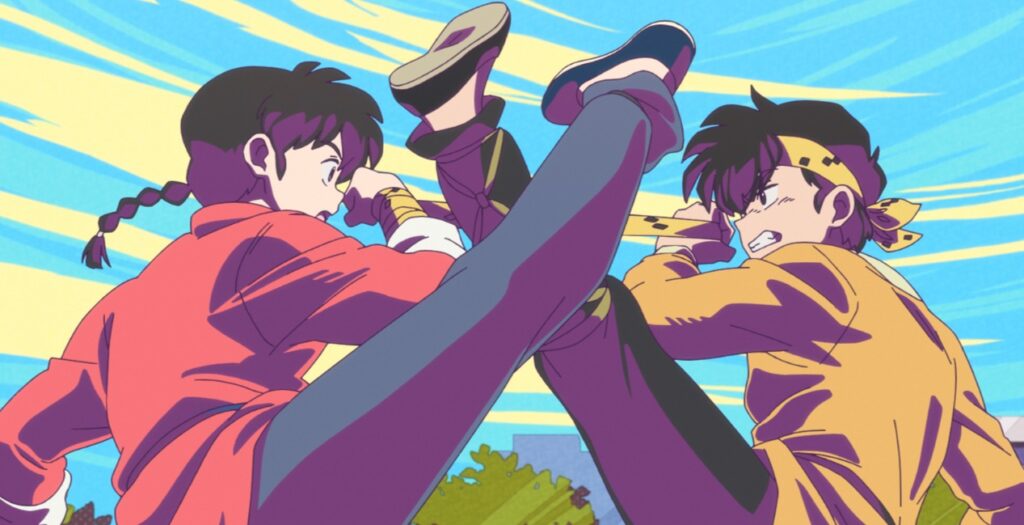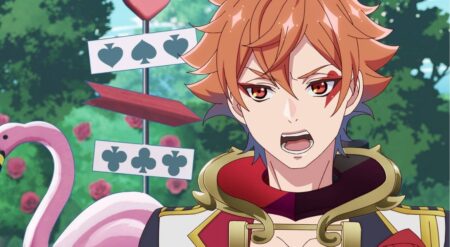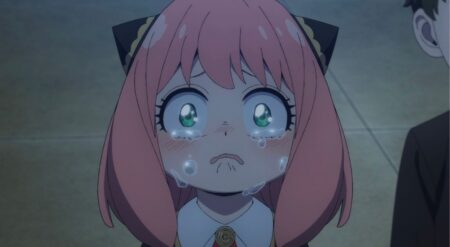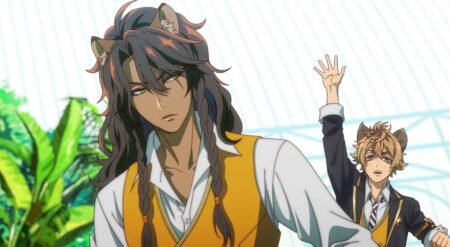It should hardly be a surprise that Ranma 1/2 Season 1 is such an utter delight. Each episode manages to do just that with bursts of color and personality, making the MAPPA adaptation an absolute must-watch. Based on the manga series written and illustrated by Rumiko Takahashi and its subsequent late ‘80s and early ‘90s anime, the 2024 Netflix adaptation finds fresh vibrancy within the familiar styles and characters. And it does so without ever sacrificing the essence of its source material.
One of the more immediate, wonderful elements of Ranma 1/2 Season 1 is that it starts from a place of heightened absurdism. Setting an anything can and will happen tone in Episode 1 allows the series to fully lean into its own lunacy without audiences questioning it.
Ranma (Megumi Hayashibara and Kappei Yamaguchi), a 16-year-old boy and martial artist, is cursed to transform into a girl when splashed with cold water, only returning to his original form when splashed with hot water. His father, Genba, is similarly afflicted, though he turns into a panda. How Ranma deals with these transformations is the catalyst for much of the humor throughout the season.
However, his relationship with Akane (Noriko Hidaka), the daughter of his father’s friend, brings out the unlikely heart. Their fathers wish the two of them to marry, announcing their engagement despite neither Ranma nor Akane being interested.
The two fight, prodding and poking at one another in their own means of getting to know each other. Their banter is instantly infectious as the two deal with the consequences of their engagement (the rage of Akane’s many suitors) and the situations they find themselves in when new characters appear and challenge them to fight.
Directed by Kōnosuke Uda, with Kimiko Ueno writing the series’ scripts, Hiromi Taniguchi designing the characters, and composer Kaoru Wada crafting both the energized and soft score, Ranma 1/2 Season 1 strikes a strong balance of dynamic visuals and strong writing.
As fighting is such a key component of the series, it makes sense that those combat instances would look terrific. The series adopts an oversaturated aesthetic, especially in the early episodes and mid-fight. It’s a visual trick to show the shifting tone, even as many of the fights themselves are played for laughs.
Ranma 1/2 Season 1 is an explosion of color.
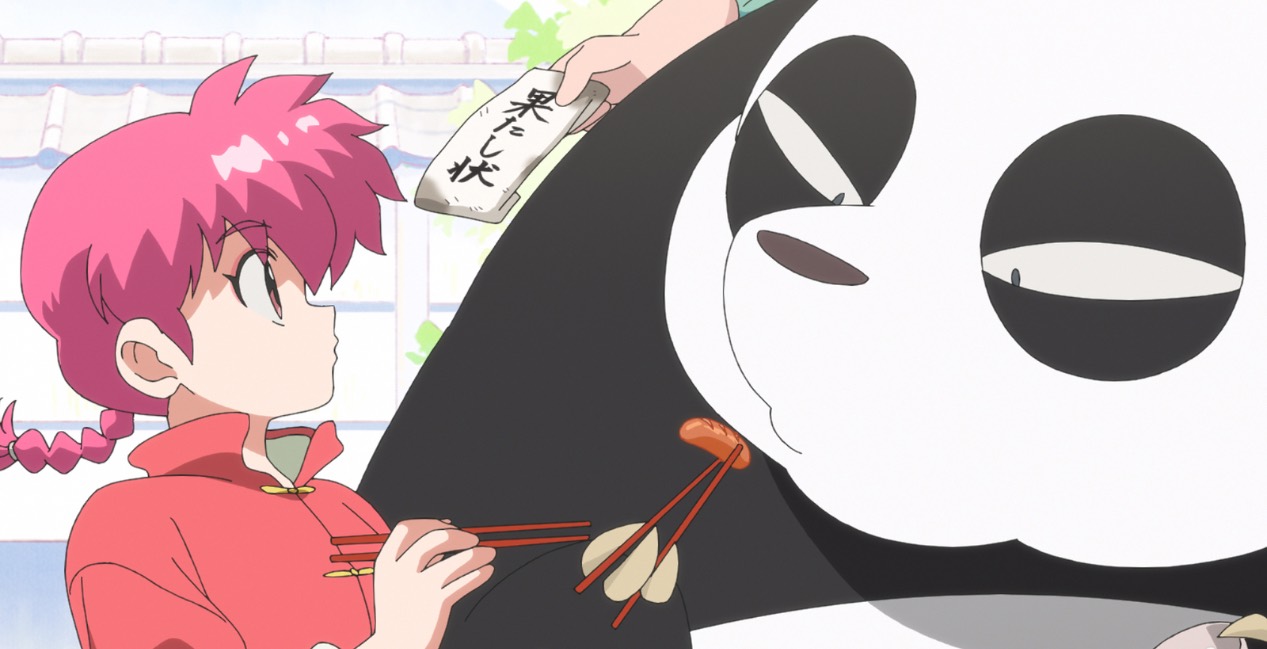
The animation aims for classic comic-book styling and effects in those fight sequences but takes on a softer approach in the backgrounds. The architecture and landscapes are painted in golden hues with barely any lines, strikingly and effectively contrasting the bold character designs and foreground action. Despite the abrasive comedy and loud characters, the series finds understated beauty that allows background artists to shine.
While the animation is an absolute highlight, playing with unexpected textures and unique color stories that offer necessary contrast, the story and ridiculous escapades Ranma finds himself in make the series so winsome.
From Episode 2 onwards, Ranma never catches a break. From the arrival of old rivals, such as Ryoga and Shampoo, to martial arts battles that push the limits of what martial arts entails (ice skating, rhymic gymnastics), Ranma is constantly facing off with someone.
This is where so much of the humor comes from, especially when Ranma transforms into his girl form. It’s refreshing to see how little panic Ranma experiences as a girl, especially for the genre. Instead, he often finds ways to leverage his curse to his gain and is comfortable walking around as a girl, even in casual moments around the dojo.
One of the most charming aspects of Ranma 1/2 Season 1 is the stark differences between the male and female forms of Ranma. While the former is a pest in his own ways, especially when taunting Akane, he’s fully feral in his female form and an actual menace. This shift in personality is hilarious as he becomes more willing to fight anyone who sets him off while in his girl form.
Dynamic performances help bring these characters to life.
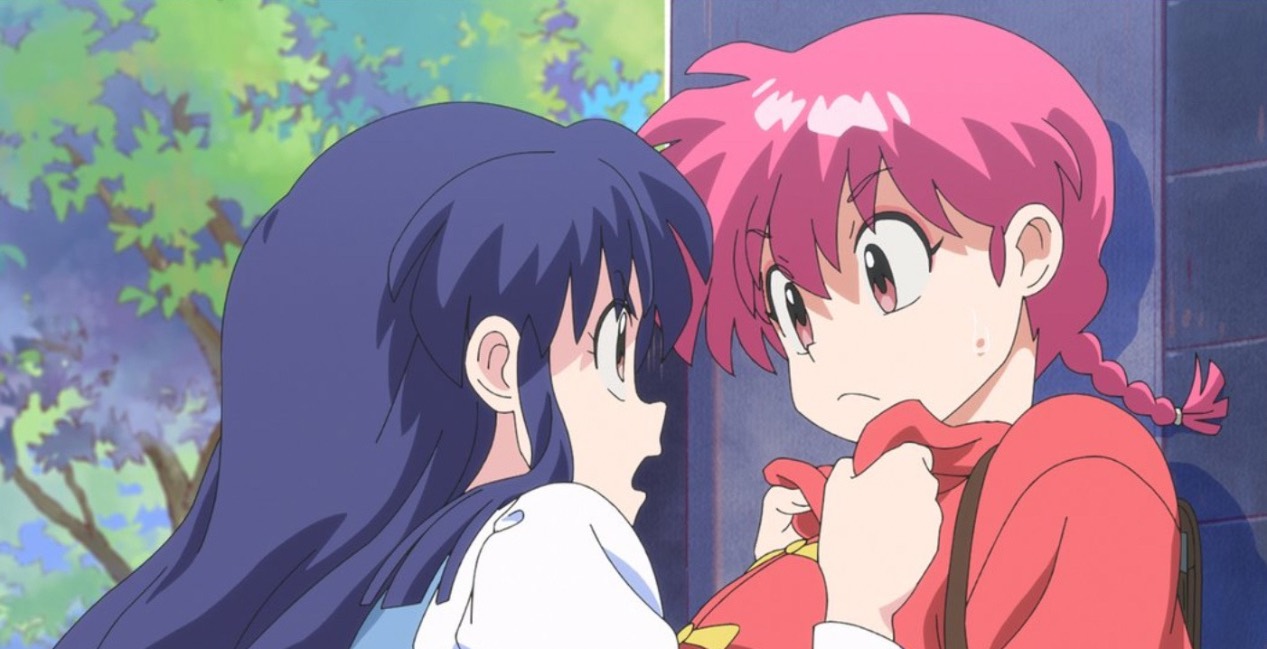
These two parts are aided tremendously by the voice actors Megumi Hayashibara and Kappei Yamaguchi, who are reprising their roles from the original series. Yamaguchi, in particular, stands out.
While fans of his work as Ussop in One Piece will undoubtedly recognize certain vocal inflections and general cadence, his youthful, expressive performance is a genuine delight. He sounds no different than he did over 30 years ago. It’s just one of the many reminders of the tremendous feats that voice actors can pull off.
Ranma 1/2 Season 1 delights in its bizarre settings but allows for genuine, heartfelt moments. Ranma might not always understand his feelings towards Akane, but the instances where he tries to cheer her up, work together with her, or protect her speak to his true emotions.
They might not recognize their mounting crushes on the other, but that makes it all the more sweet to us. For all that the series eschews realism, it finds sincerity in their relationship. They’re teenagers; of course, they aren’t going to be able to figure it all out immediately.
Bolstered by hyperkinetic action sequences and striking visuals, Ranma 1/2 (2024) Season 1 enchants us with its innate silliness. By maintaining the spirit of the original while updating the content and aesthetic, the series pulls off a near-perfect adaptation.
Ranma 1/2 Season 1 is out now on Netflix.
Ranma 1/2 Season 1
-
Rating - 8.5/108.5/10
TL;DR
Bolstered by hyperkinetic action sequences and striking visuals, Ranma 1/2 (2024) Season 1 enchants us with its innate silliness. By maintaining the spirit of the original while updating the content and aesthetic, the series pulls off a near-perfect adaptation.

